How Much Does Mold Removal Cost?
While you can remove mold in your home by doing online research and following instructions, it is always best to hire a trustworthy professional company to handle mold remediation. Professional remediation companies are trained to find the mold, identify sources, evaluate the level and quantity of growth, contain it, and remove it safely and efficiently. Mold is not something to mess with on your own because it can be hard to find and extremely toxic in some cases. There are no projected cost increases or decreases for this project in 2023. However, as some manufacturers of different products are increasing costs, costs for chemical antimicrobials may increase.
The national average mold remediation cost is between $1,500 and $9,000, with most homeowners paying $3,500 to have mold remediation done in their attic. This project’s low cost is $500 for mold remediation in a bathroom. The high cost is $30,000 for whole-house mold remediation on the areas affected within a 2,000 sq.ft. house.
Mold Remediation Cost
| Mold Removal Cost | |
|---|---|
| National average cost | $3,500 |
| Average range | $1,500-$9,000 |
| Low-end | $500 |
| High-end | $30,000 |
In this guide
Mold Remediation Cost by Location
Mold Removal Cost by Type
Professional Mold Removal Process
Mold Removal Price by Company
Mold Inspection and Remediation Cost
Average Water and Mold Remediation Cost
Mold Prevention vs Remediation Cost
Mold Removal vs Remediation
Facts About Mold
Health Effects
Enhancement and Improvement Costs
Additional Considerations
FAQs
Mold Remediation Cost by Project Range
Mold Removal Cost per Square Foot
The average cost of mold remediation per square foot is $10 to $30. Mold does not commonly fill an entire space, so remediation companies charge per square foot based on the area where the mold is present. This is the most common pricing structure for small and medium infestations. A smaller contained area like a crawl space has less square footage and is less expensive than mold presence in a large area of drywall 1 that has to be removed.
Most companies charge by the square foot for smaller infestations. However, if a significant mold problem impacts an entire room, such as after a flood or fire, they may charge a package price for remediation in that room. While it is possible for most or all rooms of a home to be impacted in a severe infestation, it is unlikely for every inch of your interior to be impacted, so costs are not always indicative of treating your total interior square footage. However, home interior square footage does not always account for wall and ceiling square footage, so it is not a good one-to-one comparison for treating a specific home size. For example, a 2,500 sq.ft. home may only need 1,200 sq.ft. treated, or it may need more if all the walls in the home are affected, but this is less likely. The table below highlights different size options for removal and their respective costs based on the square footage.

| Area Size | Remediation Cost |
|---|---|
| 50 sq.ft. | $500 - $1,500 |
| 100 sq.ft. | $1,000 - $3,000 |
| 150 sq.ft. | $1,500 - $4,500 |
| 200 sq.ft. | $2,000 - $6,000 |
| 300 sq.ft. | $3,000 - $9,000 |
| 500 sq.ft. | $5,000 - $15,000 |
| 1,000 sq.ft. | $10,000 - $30,000 |
| 1,200 sq.ft. | $12,000 - $36,000 |
Mold Remediation Cost by Location
Mold can technically take root and grow anywhere, requiring immediate remediation for an average cost of between $100 and $30,000. The location directly influences the cost of remediation. The chart below illustrates some of the most common areas of growth and respective costs for the removal, followed by a description in the subsections.

| Location | Remediation Cost |
|---|---|
| Vent | $100 - $500 |
| Siding | $300 - $500 |
| Bathroom | $500 - $1,500 |
| Crawl Space | $500 - $2,000 |
| Ceilings | $1,000 - $9,000 |
| Walls | $1,000 - $12,000 |
| Kitchen | $1,200 - $10,000 |
| Basement | $1,500 - $4,000 |
| Attic | $1,500 - $9,000 |
| Garage | $1,500 - $10,000 |
| HVAC | $3,000 - $10,000 |
| Whole Home | $10,000 - $30,000 |
Mold in Vents Removal Cost
The cost of removing mold from the vents averages $100 to $500 if the ducts are not impacted. If the vents are impacted, your ducts may also be impacted and should be inspected because they are often affected together. In this case, you require air duct and vent mold removal. These extra steps increase the price drastically. Mold is removed from vents by sealing them and cleaning the non-porous surfaces with an antimicrobial cleaner, followed by vacuuming and air scrubbing to ensure no spores remain.
Cost of Mold Remediation in Siding
The cost to remove mold from siding averages $300 to $500. Mold most commonly impacts wood siding, but small amounts may be found on vinyl 2, fiber cement 3, stucco 4, and other materials. The mold must be cleaned from the surface because it is unsightly and harms surfaces like wood, damaging the siding. To remove it, the siding is cleaned manually or with pressure washing, usually with an antimicrobial chemical. Because this takes place outdoors, air scrubbing and containment are not usually necessary, so costs can be lower.
Bathroom Mold Removal Cost
Removing mold in your bathroom costs $500 to $1,500. If your bathroom is not well-ventilated or you have had a leak, there is a high chance of mold growth in the shower, bathtub, sink, drains, or the walls above the shower. The best removal method is to use air scrubbers. If you find or suspect mold growth behind your tub, sink, or vanity, the project’s cost may increase dramatically. This is because mold growing behind non-porous surface areas means removing and replacing the porous material. So, while mold removal from the tub costs $500 to $1,500, removing it from behind the tub increases the cost to that of treating other walls and porous areas.
Mold in Crawl Space Removal Cost
Removing mold growth in a crawl space costs $500 to $2,000, depending on the crawlspace size and how much mold is present. Crawl spaces grow mold for many similar reasons as basements, such as dampness and high humidity levels. Since they are much smaller and more contained spaces than basements, they typically have more ventilation and do not have a big growth area. The cost is less than basement mold removal. Removal may include containment, air scrubbers, vacuuming, or cleaning the impacted surface areas with antimicrobial cleaners.
Average Cost of Ceiling Mold Remediation
The cost of ceiling mold remediation is $1,000 to $9,000. Porous ceiling materials absorb moisture and grow mold, including drop, acoustic, and typical drywall ceilings. In most cases, the area must be contained, and air scrubbers and vacuums are used to remove the mold. Depending on whether the mold is on the surface, some of the ceiling material may need to be removed and replaced. Other materials may need to be surface cleaned to ensure the mold is gone. Costs rise when removal and replacement are required.
Wall Mold Remediation Cost
The cost of mold remediation for walls ranges from $1,000 to $12,000. Removing mold from walls can be some of the most expensive remediations. Mold in walls is commonly associated with leaking pipes and must be treated by containment and fixing the cause of the moisture through repair or sealing. Then, the walls may be cleaned with air scrubbers, vacuums, and antimicrobial cleaners, which is usually the case with concrete walls, or the affected section will be removed. This is the most common scenario for drywall, plaster 5, and other porous materials. Once the mold is inside the wall material, it should be replaced to ensure the mold does not return.
Average Cost of Mold Removal in a Kitchen
Mold removal costs for the kitchen average $1,200 to $10,000. Kitchens can be affected by mold for several reasons, from leaking pipes behind the sink to spills behind cabinets and pipes sweating inside the walls. Spilled food inside a cabinet can also lead to mold spores that spread. With so many areas in the kitchen that can be impacted, costs have a wide range. Non-porous surfaces can be cleaned with special vacuums and air scrubbers. Porous materials and surfaces may need surface cleaning or need to be removed and replaced. Whatever caused the mold to begin growing should also be addressed, whether that is a leak or another moisture problem.
Basement Mold Removal Cost
The average cost of basement mold removal is between $1,500 and $4,000. Basements get damp, have high humidity, and are common locations for leaking pipes. These are perfect conditions for mold to grow. It also grows in basement wood, insulation, and drywall. The average size basement is around 1,000 sq.ft., with most mold areas averaging between 100 and 300 sq.ft. Basement removal includes scrubbing down affected areas, drying out the space using dehumidifiers, and using air scrubbers to remove spores.
Cost of Mold Remediation in an Attic
Expect to pay $1,500 to $9,000 for mold removal, depending on the space size and accessibility. Attics are great for mold growth due to poor ventilation, proneness to moisture problems, such as a leaking AC unit or leaky room, or condensation from poor insulation. If the most affected area is within the insulation, you may have to remove it. The labor for insulation removal raises costs. Proper cleaning and ventilation are the most important steps of mold remediation in the attic.
Cost of Mold Removal in a Garage
The cost of mold removal in a garage averages $1,500 to $10,000. Garages can be impacted by mold for many reasons. Because the garage likely sits on a slab, it may have moisture problems if not properly waterproofed. Or, there may be pipes that sweat or leak, humidity may be a problem, and mold spores may spread from other areas into the garage. Remediation varies depending on which areas are impacted. If the problems are at the surface, cleaners, air scrubbers, and vacuums can be used, along with containment. If the issues are inside the walls or are impacting porous materials, these may need to be removed and replaced.
HVAC Mold Removal Cost
The average HVAC mold removal cost, including air duct mold removal cost, ranges from $3,000 to $10,000. Mold can be found in the air ducts of some HVAC systems and occasionally may impact a radiant heat system if the pipes sweat or leak. If left unattended, mold can get into the air, cause air quality and health issues, spread to the floor, ceilings, and walls, and may require replacement. HVAC mold removal requires special cleaning to remove airborne spores. This process is one of the most expensive remediations. Ducts can involve significant mold growth due to moisture build-up and condensation when filters are not changed properly, or the HVAC system is not properly vented and serviced. Once it is discovered, the HVAC system must be turned off immediately so that the airborne spores do not spread throughout the home.
Whole-House Mold Remediation Cost
If mold and toxic spores are present in your entire house, expect to pay between $10,000 and $30,000 for remediation. This cost includes the cleaning and removal of the mold and the removal and replacement of impacted areas that cannot be cleaned, including drywall and areas that may have been affected by a water leak or flood, such as carpeting or fabric. If you want to ensure it is prevented in the future, you may opt for replacing windows, improving your basement drainage system, and having the land regraded around the house foundation. This project requires the replacement of drywall, carpets, and other household fixtures, adding to the total cost.
Mold Removal Cost by Type
If you experience mold in and around your home, hire a professional for immediate removal. The removal cost ranges from $600 to $8,000 for remediation of an area between 50 and 300 sq.ft. Costs are higher if the mold has spread more widely. More than 100 types exist, each differing in appearance, location, side effects, and removal cost. Most removals cost a similar amount. Toxic forms are slightly higher due to the safety equipment. The chart below highlights the most common mold in homes and their respective removal costs, including labor and materials.

| Type | Remediation Cost |
|---|---|
| Chaetomium | $600 - $5,000 |
| Ulocladium | $600 - $6,000 |
| Alternaria | $700 - $6,000 |
| Aspergillus | $700 - $6,000 |
| White | $700 - $6,000 |
| Cladosporium | $700 - $6,000 |
| Green | $700 - $6,000 |
| Black | $800 - $7,000 |
| Serpula Lacrymans | $800 - $7,000 |
| Fusarium | $800 - $8,000 |
Chaetomium
The average cost to remove Chaetomium is between $600 and $5,000. This mold is one of the most common. It is most often found in water-damaged or damp homes and can be recognized by its musty smell and blue-green color. The spores are shaped like tiny footballs and are dark brown. This mold grows in places that may be difficult to see at first, including beneath carpeting, inside air ducts and walls, and in cellulose-rich areas, including wood, drywall, and around pipes and ceiling tiles. There are different types and species of Chaetomium, and some may be carcinogenic. This mold spreads easily and becomes expensive to clean if it spreads far enough.
Ulocladium
Homeowners pay between $600 and $6,000 for Ulocladium removal. It is a fast-growing mold frequently found indoors. It requires more water than other types and grows best in homes that have flooded or sustained extreme water damage. It is often found in windows, basements, kitchens, and bathrooms on wallpaper, painted walls, and other painted surfaces. Ulocladium gives off a brown, gray, or greenish-black appearance with a suede-like texture. It is not uncommon to find this mold growing with other types, including Chaetomium, Fusarium, and Stachybotrys. Like other types, this mold can cause health problems, some minor and some very serious.
Alternaria
Expect to pay between $700 and $6,000 for professional removal of Alternia. It is one of the most common types of outdoor mold found in the environment during the spring and summer months. More than 40 varieties of these fungi are responsible for plant damage and degenerative diseases on trees and bushes. Its greatest danger is its ability to spread quickly inside and outside the home. When the spores become airborne, they infest several locations and materials, including your clothes, house plants, and furniture. In a home with high humidity, Alternaria starts to grow and can invade areas beneath carpets, showers, attics, basements, and wall interiors. The most common side effects are cold-like symptoms, including watery eyes, itchy throat, runny nose, headaches, fatigue, and sneezing. In some cases, it may lead to allergies, asthma, skin rashes, or itching. The cost of removing it depends on its prevalence.
Penicillium Aspergillus Mold Removal Cost
The cost of Penicillium Aspergillus mold removal averages $700 and $6,000. There are more than 250 types of Aspergillus, and Aspergillus Penicillium is one of the most commonly found indoors. It appears as a white fungus but quickly turns different shades of black, brown, yellow, or green, depending on its type. Unlike most molds, Aspergillus grows well in low-moisture areas. This means you may find it in windows, doors, cabinets, and other places that did not become damp. Exposure to this mold may lead to Aspergillosis, a respiratory infection.
White Mold Removal Cost
White mold remediation costs range between $700 and $6,000, depending on the extent of mold present. White mold refers to many species that grow in homes, including Aspergillus, Cladosporium, and Penicillium. Some of these might appear white earlier and change colors after producing spores. If their spores are not pigmented, they appear white regardless of age and blend with their host materials. Because some people do not realize that white mold is present, it may put them at risk for health issues for extended periods.
Cladosporium
The cost of mold remediation for Cladosporium ranges from $700 and $6,000. Cladosporium is a common type found on nearly all surfaces, including damp basements, bathrooms, drywall, carpeting, paint, attics, and near HVAC systems. Those exposed to it may not experience symptoms. However, others experience sneezing, dry skin, coughing, watery eyes, itching throat, and stuffy nose.
Green
The cost of green mold remediation ranges from $700 to $6,000. Green mold is a general term referring to different fungi that grow in shades of green. It appears soft and fuzzy or powdery and can commonly be seen on fruits, bread, and many other foods. However, this type can also grow in wet areas of a home. Although many species can grow green, the most common are Cladosporium, Aspergillus, and Penicillium. Continuous exposure can affect the respiratory system and trigger asthma attacks.
Black Mold Removal Cost
Black mold, or Stachybotrys chartarum, can be difficult to remove. Expect to pay higher removal costs, between $800 and $7,000, depending on the extent of the mold. If this is found in your home, it is important to address the issue right away to prevent serious health concerns. This type grows in areas that remain wet, such as air conditioners or paper, gypsum board, and fiberboard areas that have experienced water damage from flooding or leaks. It also thrives in areas with high condensation and requires moisture to stay alive. Black mold stains the surfaces it grows on and is difficult to remediate. The surfaces may require replacement or additional bleaching.
Serpula Lacrymans
The cost of serpula Lacrymans remediation ranges from $800 to $7,000. This type causes dry rot in the wood it feeds on and inhabits. Its deep yellow color makes it easy to locate. Sadly, it can cause widespread damage and is hard to control. Serpula Lacrymans get water from other locations, which is why it survives on dry wood. This variety grows through dry mortar 6, plaster, and masonry. If left untreated, serpula Lacrymans can eat drywall, lumber, subflooring 7, and siding. If so, these areas must be replaced. Unlike most other fungal spores, serpula Lacrymans spores are not major allergens and are not pathogenic to humans. Because this mold causes damage, it can be costly to remove completely.
Fusarium
The cost of Fusarium removal is high and ranges between $800 and $8,000. Fusarium is a fast-spreading type found on all surfaces, even at low temperatures. It can be extremely dangerous to healthy individuals, causing onychomycosis, a nail infection, and keratomycosis, an infection of the cornea. Some individuals may develop a systemic infection when the spores enter the bloodstream. This type is common in areas around a water leak.
Professional Mold Removal Process
Mold remediation services typically cost $1,500 to $9,000. Approximately 60% of the project’s cost is for labor, and the other 40% is for materials. This involves sealing and cleaning the entire area. The process takes a few hours to several weeks, depending on the amount of mold, what caused it, and the level of damage. Mold remediation is a multi-step process that varies depending on the area, how large the mold infestation is, and what surfaces are impacted.
1. Assessment and Containment
Most companies do not test for mold. If mold is visible, it is confirmed, so the process begins with an assessment and inspection to find the mold and its source. The areas where mold is found are contained to prevent the spores from spreading and becoming airborne. This involves physical barriers, such as plastic sheeting or negative air pressure to prevent air circulation. Containment costs are charged by the hour, at $75 to $120, plus costs for the containment equipment, usually under $100.
2. Surface Clean-up
After the area is contained, clean-up begins. For porous and semi-porous surfaces, this can include physical cleaning with antimicrobial cleaners, which cost around $100 per gallon, plus the labor cost, which averages $75 to $120 an hour. In some cases, dry ice may kill mold spores on porous materials. Dry ice mold removal costs $1,400 to $2,000.
3. Air Cleaning
At this point, the air must be cleaned to remove the mold spores and prevent them from returning or spreading. This can be done with HEPA vacuums, dry fog to remove odors from the air, or air scrubbers. Dry fog removal costs are $800 to $1,100, while air scrubbers and HEPA vacuums start at $500 to $1,000.
4. Surface Removal and Disposal
If porous materials cannot be cleaned, such as drywall, wallpaper, some fabrics, and carpeting, these are removed and disposed of. Some soft furnishings and furniture can be sent for cleaning. This costs $2 to $20 per pound, depending on what it is. Other materials must be disposed of and replaced as needed.
5. Restoration
Depending on how bad the mold infestation was, cleaning may not be enough. If walls, ceilings, and other furnishings were impacted, many need to be replaced. At this point, restoration begins. Restoration can be the most costly part of the remediation process. Some companies include it in their work, while others only deal with the mold, and you need to call in another specialist. Restoration costs approach $10,000 to $20,000 for severe mold problems.
Mold Removal Price by Company
The average mold removal price by company ranges from $1,200 to $10,000. The rates depend on the specialty service provider, removal type, and other factors. Companies specializing in mold remediation may be good for the job because they have the experience and equipment to do the job properly. Big-name companies and franchises might have better rates and availability because of their size. The table and subsections below outline popular mold removal services, their average costs, and what each entails. There is a huge variance in the abatement cost range because of the variables involved in the size and complexity of removal jobs. Below are the average cost ranges for the cleaning service brands found nationwide. These companies may franchise, meaning costs may vary by state.

| Company | Removal Cost |
|---|---|
| ServiceMaster | $1,200 - $4,500 |
| Servpro | $1,500 - $10,000 |
ServiceMaster Mold Removal Cost
ServiceMaster charges from $1,200 to $4,500 for mold mitigation, depending on the mold severity and its location. When it is found in the attic or air ducts, it costs far more for this company to clean, as is the case with most companies. ServiceMaster rates vary depending on the region where you live. Specials may be offered for combining services, such as when you have carpets cleaned or other cleaning services performed with your mold removal and remediation.
Servpro Mold Remediation Cost
Servpro mold removal ranges from $10 to $25 per sq.ft., or $1,500 to $10,000 per treatment, depending on the job size, location, mold severity, and other factors. If you select to have an inspection and testing done before removal, those costs may be incurred in addition to the removal cost. Servpro may also offer discounts for customers who use their water restoration or other services with mold removal. Ask about these when getting an estimate. The cleaning process involves removing water, water damage, and mold and cleaning the area thoroughly.
Mold Inspection and Remediation Cost
In many cases, remediation begins with an inspection to find all the mold, where it extends to, and possible sources. In some cases, if you choose remediation from the same company, they may waive the cost of the inspection or include it with the remediation. Other times, the cost of the inspection is separate at $450 to $800, regardless of whether you have remediation done with this company. Some companies include testing to determine the mold type, but many companies do not do testing, with the assumption that if you see mold, you have mold, and the type is not going to greatly impact the remediation. For the average home, the cost of a full inspection and remediation averages $1,950 to $5,800. Costs are higher when more mold is found, while costs are lower if only a small amount is found.
You may want to hire an inspector who is unaffiliated with a mold remediation company for an in-depth look at the issues. In this case, it is a good idea to hire someone through the American Board of Industrial Hygiene or American Council for Accredited Certification to ensure the inspector is accredited and can provide a report to show your insurance adjuster or that there is no mold when you sell your home.
Average Water and Mold Remediation Cost
If you have had a flood, whether through a burst pipe or because of a storm, mold may follow. Mold is more likely to grow in areas that are damp or have high humidity. If you have moisture problems in your home or have experienced a flood, mold can follow if the area is not dried out quickly. Water and mold remediation costs sometimes go hand-in-hand. The average cost to deal with and restore water damage is $1,200 to $5,000. This can include some mold remediation, but not always if it has been left for too long and the mold has spread outside the area. In this case, the total cost to deal with the water damage and mold average $2,700 to $10,000.
Mold Prevention vs Remediation Cost
If mold has been in your home once, it may return if you do not address the underlying issues. It can sometimes be more effective to address issues before they lead to mold rather than waiting until mold is seen. The EPA recommends fixing underlying leaks and issues to prevent mold growth or its return. This costs $150 to repair a small leak to $7,000 to waterproof or seal a basement. However, not addressing the cause of mold growth means you need to undertake remediation multiple times, which adds to much more than the cost of preventing it. Running dehumidifiers in the basement, drying out after a flood, and addressing areas where water may be entering the home prevents mold from occurring. Prevention costs range from $150 to $7,000, while full remediation ranges from $600 to $30,000 for the entire house if it needs to be done again, making prevention the lower cost. Below are the average costs for both methods.

| Method | Average Cost |
|---|---|
| Prevention | $150 - $7,000 |
| Remediation | $600 - $30,000 |
Mold Removal vs Remediation
Mold exists naturally in the air inside and outside your home. It is impossible to completely “remove” all mold from within a building. Microscopic spores still exist even after the problem has been addressed. Remediation is the process of cleaning and removing colonies and growth on surfaces inside your home. It helps to get mold levels back to what is considered normal for your area and air humidity levels. Because it is impossible to guarantee the removal of all the mold in a building, most companies offer remediation services, cleaning, and removing the problem from your home.

Facts About Mold
Most people are unaware of many important mold facts. Knowing these facts can prevent and remove it from your home and better protect your family. Mold is found nearly everywhere, indoors and out. Spores thrive in moisture, high humidity, and other wet environments. If these environments are present in your home, growth can begin in as little as 48 hours. Indoor humidity levels above 45% could lead to conditions that allow mold colonies to establish. Because it thrives in moisture, sources of water, humidity, or moisture must be addressed and dried before remediation can begin. Otherwise, while the visible mold may be removed, spores could recolonize the area within a few days.
Causes
Mold is a fungus that presents in a thread-like structure and can be found in nearly every part of the world. Spores are everywhere, but a problem arises when it grows inside the home. This is usually because the spores have found their way to a damp area where conditions are right for them to grow. Some common causes of mold growth in the home include pipe leaks, roof leaks, floods, and high humidity levels. Once the spores are present, they can easily spread to other areas.
Infestation Symptoms
Often, your first sign of a mold infestation is a musty odor. Since most infestations start small, the odor is usually the determining factor that indicates presence. Other signs include visible growth on the walls and other surfaces and staining on the walls or ceilings. Another sign of mold infestation is if you have an increase in allergy symptoms indoors. If you detect or suspect mold, a remediation company can be hired to complete testing, confirm its presence, and offer a solution.

Health Effects
According to the CDC, mold exposure can lead to many health issues or none at all. It depends on the person’s sensitivity, whether that person has mold allergies, the mold type, and the level of exposure. The most common symptoms of mold exposure include nose, throat, eye, and lung irritation, coughing or wheezing, nasal stuffiness, and skin irritations. Mold may trigger asthma attacks in people who experience asthma or serious lung infections or have compromised immune systems.
Enhancement and Improvement Costs
Mold Damage Repair Cost
The cost to repair mold damage ranges between $75 and $3,000, in addition to the remediation costs. In most cases, simply cleaning the mold is enough to address the problem. However, if there has been ongoing water damage or a flood, you may need to repair and replace many of the porous areas of the home. This could include the removal and replacement of drywall, carpeting, hard flooring, cabinets, furniture, and other areas. It may involve simply repairing the damaged areas, which will typically incur a cheaper repair cost than total replacement.
Leak Repair
If leaks are found along with the mold damage, they need to be repaired at an average cost of $150 to $350, depending on the severity and location of the leak. If you need roof leak repair, you can expect to spend $400 to $2,500. Serious plumbing issues could cost thousands of dollars, while minor leaks could be a relatively inexpensive fix. Regardless of the cost, it will be important to fix all leaks as quickly as possible so that no further water damage or mold growth occurs after the remediation has been completed.
Additional Considerations and Costs
- DIY. A few methods you can use to clean mold include using detergent and water on hard surfaces or bleach and water. Wear a mask and use plastic to seal the contaminated room from the home for health and safety.
- Insurance. Some insurance companies cover mold remediation, particularly if caused by a leak or flood. It is a good idea to contact your insurance company for more information.
- Guarantees. Not all mold remediation companies offer a guarantee because spores are constantly present in the home. However, air testing can be done to ensure that spores have returned to normal levels and that all colonies have been addressed.
- Estimates. Get at least three to five estimates before hiring anyone for the job. All companies differ in costs and the extent of work they offer. This makes it easier to eliminate those companies that do not meet your needs.
- EPA guidelines. According to the EPA, if the mold in your home affects an area less than 100 sq.ft., you should be able to clean it yourself. However, a professional should handle anything larger or anything caused by a flood or leaking pipe.
- Large infestations. Cleaning a large mold infestation yourself may lead to spore infestations in new areas. This is why larger mold problems should always be handled professionally to ensure eradication and prevent spreading.
- Certification. If you want to become certified as a mold remediation expert or inspector, you can take a course for $450. Successful completion includes a certification that enables you to work in this field.
- Cars. Cars are also susceptible to mold, particularly in trunks and upholstery, if they cannot dry. Mold remediation for cars starts at $450 and may reach $2,500, depending on how badly the car is impacted. Most car detailing shops offer this service.
FAQs
- Should I buy a house with mold?
It is generally advised to avoid buying a house that has a current or recent mold issue reported. This is because you are investing when you purchase a home. You don’t want that investment to start by costing you a small fortune.
- Can mold be completely removed from a house?
No, mold is everywhere, and most mold does not colonize. It is possible to remove colonized mold from a home, however.
- What is the best product to kill mold?
Many good products kill mold, including bleach and concromium. Removing moisture from the area will also help kill it.
- Can you live in a house during mold remediation?
In most cases, yes. The area in question will be sealed off, and air scrubbers will help remove spores.
- Can I remove black mold myself?
DIY mold removal is only recommended for areas that are less than 50 sq.ft. in size. Any larger and you should seek professional help.
- Is a mold inspection necessary before remediation?
Not always. It’s mostly helpful to determine just how large the issue is.
- Is it safe to stay in a house with black mold?
Not everyone is sensitive to mold. Some black molds are not overly harmful. Speak with a remediation expert about what type of mold you have and the level of colonization.
- Is mold remediation really necessary?
Without remediation, colonies may continue to spread, damaging surfaces and potentially causing health problems.
- Is mold remediation covered by homeowners’ insurance?
In many cases, yes. However, mold growth after a flood may not be covered, so always speak to your insurance carrier.
Remodeling Terms Cheat Sheet
Definitions in laymen's terms, cost considerations, pictures and things you need to know.See full cheat sheet.
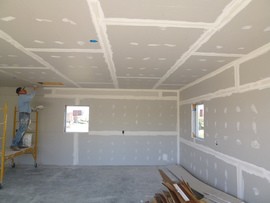 1 Drywall: Type of plasterboard, commonly used to build walls and ceilings, composed of gypsum that is layered between sheets of heavy paper
1 Drywall: Type of plasterboard, commonly used to build walls and ceilings, composed of gypsum that is layered between sheets of heavy paper
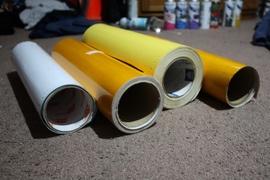 2 Vinyl: A synthetic plastic made from ethylene and chlorine. Vinyl has many applications in the construction industry and it is widely used in sidings, window frames, roofing and gutters, among others
2 Vinyl: A synthetic plastic made from ethylene and chlorine. Vinyl has many applications in the construction industry and it is widely used in sidings, window frames, roofing and gutters, among others
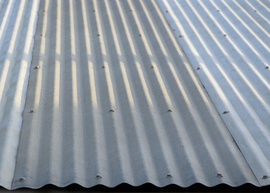 3 Fiber cement: A building material made with cellulose fiber, concrete, and recycled materials such as glass
3 Fiber cement: A building material made with cellulose fiber, concrete, and recycled materials such as glass
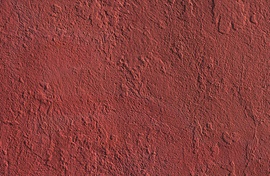 4 Stucco: A type of durable plaster finish made of aggregates, a binder, and water (traditionally Portland cement, sand, and water) used on masonry, walls, ceilings, and decorative moldings
4 Stucco: A type of durable plaster finish made of aggregates, a binder, and water (traditionally Portland cement, sand, and water) used on masonry, walls, ceilings, and decorative moldings
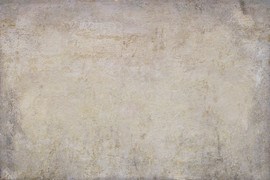 5 Plaster: A paste composed of sand, water, and either lime, gypsum, or cement, which forms a smooth hard surface on walls, ceilings, and other structures upon drying
5 Plaster: A paste composed of sand, water, and either lime, gypsum, or cement, which forms a smooth hard surface on walls, ceilings, and other structures upon drying
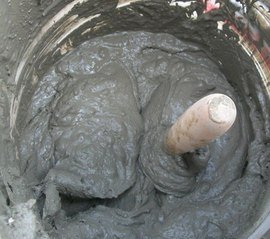 6 Mortar: A mixture of Portland cement or lime or a combination of both, sand, and water used to bind bricks, stones, and concrete masonry units together
6 Mortar: A mixture of Portland cement or lime or a combination of both, sand, and water used to bind bricks, stones, and concrete masonry units together
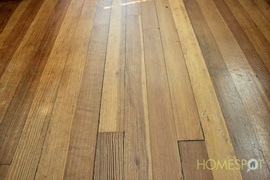 7 Subflooring: The bottom-most layer of a floor, supported by joists, over which finished flooring material is laid
7 Subflooring: The bottom-most layer of a floor, supported by joists, over which finished flooring material is laid
How much does it cost to remediate mold in my city?
Cost to remediate mold varies greatly by region (and even by zip code). To get free estimates from local contractors, please indicate yours.






